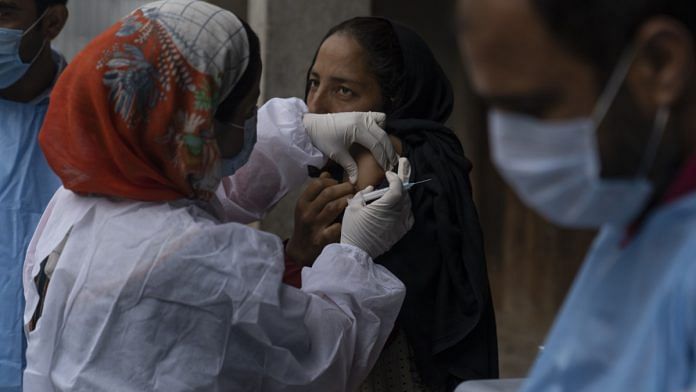Memories of India’s devastating second wave of Covid-19 are slowly receding. The pandemic has once again fallen out of the headlines; malls and mountain resorts are crowded with shoppers and tourists. Business activity is nearly back to pre-pandemic levels, as it had been just before the second wave hit in March. In fact, just like then, many Indians seem to believe the worst of the pandemic is over.
But we can’t be sure about that at all. Epidemiological models that predicted the second wave suggest that another, shallower wave might hit India as soon as this month. And the country isn’t nearly as ready as it thinks.
Part of what is driving overconfidence is the particularly devastating nature of India’s second wave: The broad spread of infection exposed a huge swath of Indians to the virus, who should thus now have some degree of immunity. Yet the simple fact is that we still don’t know enough about the second wave to make easy predictions about the third.
What we do have is a series of surveys by the Indian Council of Medical Research sampling how many Indians have antibodies for Covid-19. There have been four such surveys, with 29,000 respondents in 70 districts across 21 of India’s 28 states.
Results from the fourth survey, carried out in June and July, suggest that two-thirds of Indians have been exposed to Covid-19, up from roughly 24% in December and January. While that’s a lot, it still leaves 400 million Indians without antibodies. A third or fourth wave might raise the overall death toll sharply.
To make matters worse, we still don’t have a good grasp of how many Indians have died thus far. The federal government claims a death toll under half a million. Some models suggest the real number could be two to three million. Other estimates are even higher.
Economists at the Center for Global Development have estimated between 3.4 million and 4.7 million excess deaths in India during the pandemic — though not all may have been directly due to Covid-19. Some state governments have concealed deaths to bolster their reputations as Covid-fighters.
This is a problem because without a clear sense of how and where the second wave was most virulent, we can’t really figure out what a third will look like. The primary lesson of India’s second wave was that local healthcare systems need to be bolstered before cases spike, or they will be easily overwhelmed. Without knowing who was affected in the past, we can’t figure out where and who might be most vulnerable the next time around.
Also read: Govt allows foreign nationals to register for Covid vaccine in India through CoWin
Challenges ahead of third wave
Then there’s India’s stuttering vaccination program. A months-long export ban on Indian-made vaccines has left the rest of the emerging world struggling to fend off the Delta variant. It hasn’t helped India all that much either. The government has tried to bully vaccine manufacturers into providing doses on the cheap. To ensure the companies can invest in more capacity, they’ve also allowed them to sell to the private sector at higher prices.
This strategy might have worked if private healthcare had any incentive to beef up the vaccine distribution system. Instead, the government then limited hospitals’ margins, so only the largest private players have been interested. Meanwhile, state governments have consistently complained that they aren’t getting enough vaccines to distribute themselves.
Vaccine supply is another bottleneck. The mRNA-based vaccines from Pfizer Inc. and Moderna Inc. appear to be more effective against the Delta variant than others. Yet the government first ignored Pfizer and subsequently has been dickering with the company about indemnity clauses that most other countries signed months ago.
This means that India hasn’t accepted any of the 110 million doses the U.S. has shipped to the emerging world. Millions of Moderna shots meant for India were held back in July. When U.S. and Indian leaders met months ago, they announced plans to fund the manufacturing of the Johnson & Johnson shot in India. There’s been no obvious progress since then.
The other crucial lesson of the second wave, when the world rallied to get oxygen and medicines to India, was that no country, even one as big as India, can deal with the pandemic alone. India’s establishment, which has turned inward on every front over the past few years, has chosen to forget that. India’s slow vaccination effort, and a renewed vulnerability to Covid-19, is the price of this failure to learn.—Bloomberg
Also read: About 90% Indians want govt policy on travel booking cancellations during Covid, survey finds



